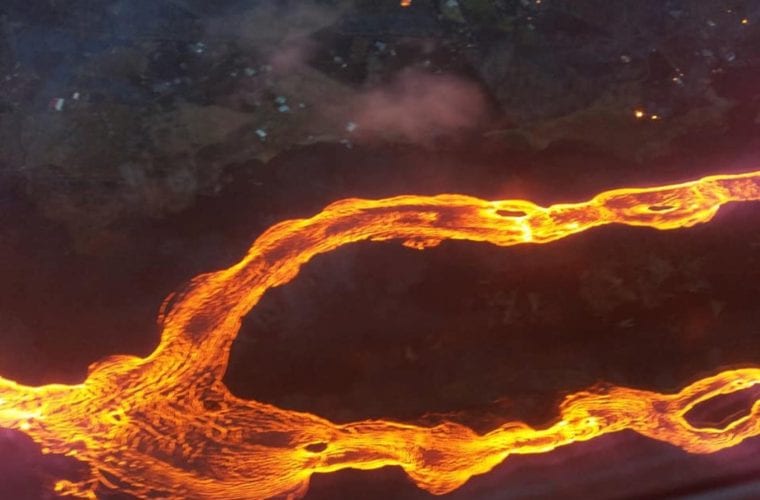The Big Island of Hawai`i – The Impact of the Eruption and How to See the Lava

What’s The Story with the Lava?
Have you been curious about what’s going on with the Volcano on the Island f Hawai`i? Well, if you are a resident of Hawaii, you most likely keep up with the eruption on the news. To put it in retrospect, the Big Island is approximately 4,028 square miles. The US Geological Survey reports that the eruption has covered 13 square miles; thats only .003%! Although it seems intimidating and dangerous, only a very small percentage of the Big Island is actually being affected by the eruption. Approximately 800 acres of new land has been created since the onset of volcanic activity in early May.
If you are as fascinated by the volcano as we are, you may be interested in a tour offered through Mokulele Airlines. The Volcano Air Adventure Tour begins with views of Maui’s beautiful coastline. You’ll most likely see waterfalls and beaches, as well as Hana Town as you cross over the Alenuihaha Channel to get to the Big Island. You will fly over Hilo and make your way to the southern lava tubes and see the lava flow into the sea. You’ll be in awe of the Volcanoes of Mauna Loa, Kilauea and Mauna Kea.
What’s The Impact of the Volcano on the Other Islands?
So how is Kilaeua affecting the other Hawaiian islands? The easiest way to answer is: there are no affects on the surrounding islands from the recent volcanic activity on the Island of Hawai`i. The Hawaiʻi Tourism Authority has assured all travelers that the impact from the recent volcanic eruption on the island of Hawai`i is “limited to a remote region on the east side, far away from the rest of the Hawaiian Islands” (http://mauinow.com/2018/05/04/hawaii-tourism-authority-volcano-impact-limited-to-remote-region/). The president and CEO of the Hawaiʻi Tourism Authority is ensuring travelers and residents that their top priority is always safety. Those travelers that have already booked a trip to the Hawaiian Islands or are considering booking should do so with confidence and rest assured that your trip will be unaffected.
The state of Hawaii consists of 8 islands: Niihau, Kauai, Oahu, Maui, Molokai, Lanai, Kahoolawe and the Big Island. Each island is made up of at least one volcano. The Big Island is unique in nature and has 5 major volcanoes, known as: Mauna Loa, Kilauea, Mauna Kea, Hualalai and Kohala. Mauna Loa is known as being the largest active volcano on Earth!
Kilauea is very active and produces more lava than any other volcano. Each island has a primary volcano, which is known as the “shield volcano”. Kilaeua is the shield volcano for the island of Hawaii and is also the youngest volcano, which makes the Big Island the youngest of the Hawaiian islands.
 Hawaiian volcanoes primarily erupt basalt rock, which when molten, produces a high fluidity liquid (lava). Hawaiian volcanoes generally have gentle sloping sides due to the fluidity of the molten basalt. A lot of other volcanoes contain steeper sides (outside of Hawaii), typically due to lavas with higher silica, shorter lava flows and/or thick beds of ash.
Hawaiian volcanoes primarily erupt basalt rock, which when molten, produces a high fluidity liquid (lava). Hawaiian volcanoes generally have gentle sloping sides due to the fluidity of the molten basalt. A lot of other volcanoes contain steeper sides (outside of Hawaii), typically due to lavas with higher silica, shorter lava flows and/or thick beds of ash.
The Hawaiian volcanoes were created by the Hawaiian hot spot, which is located under the Big Island. So how you are able to tell the age of each island? In general, when you move along the island chain from southeast to northwest, the volcanoes become older, which makes the Big Island of Hawaii the youngest of all the islands.
